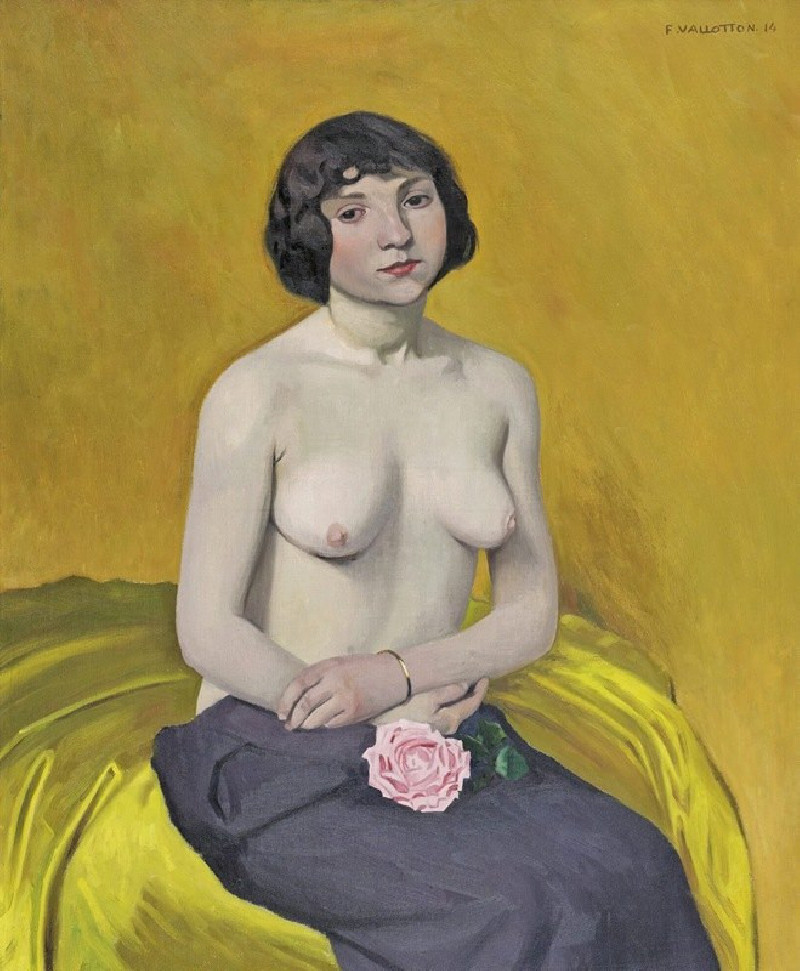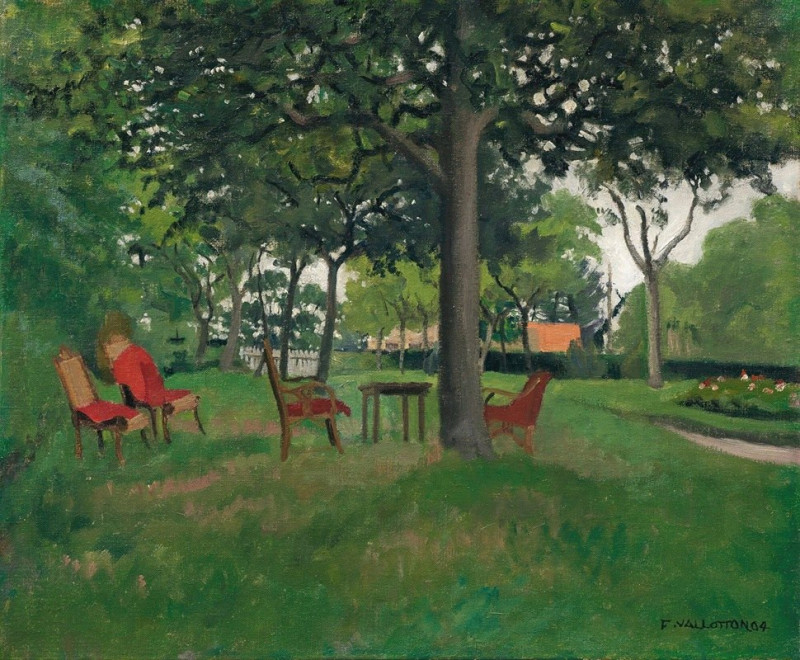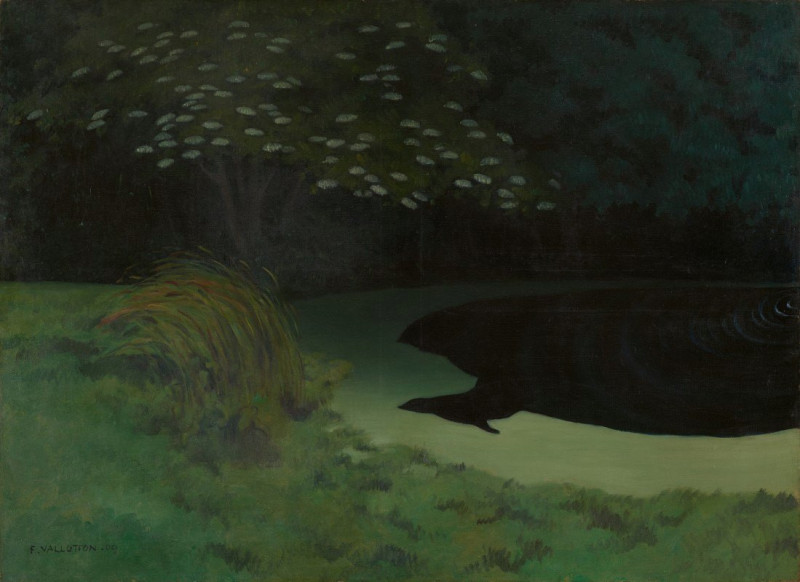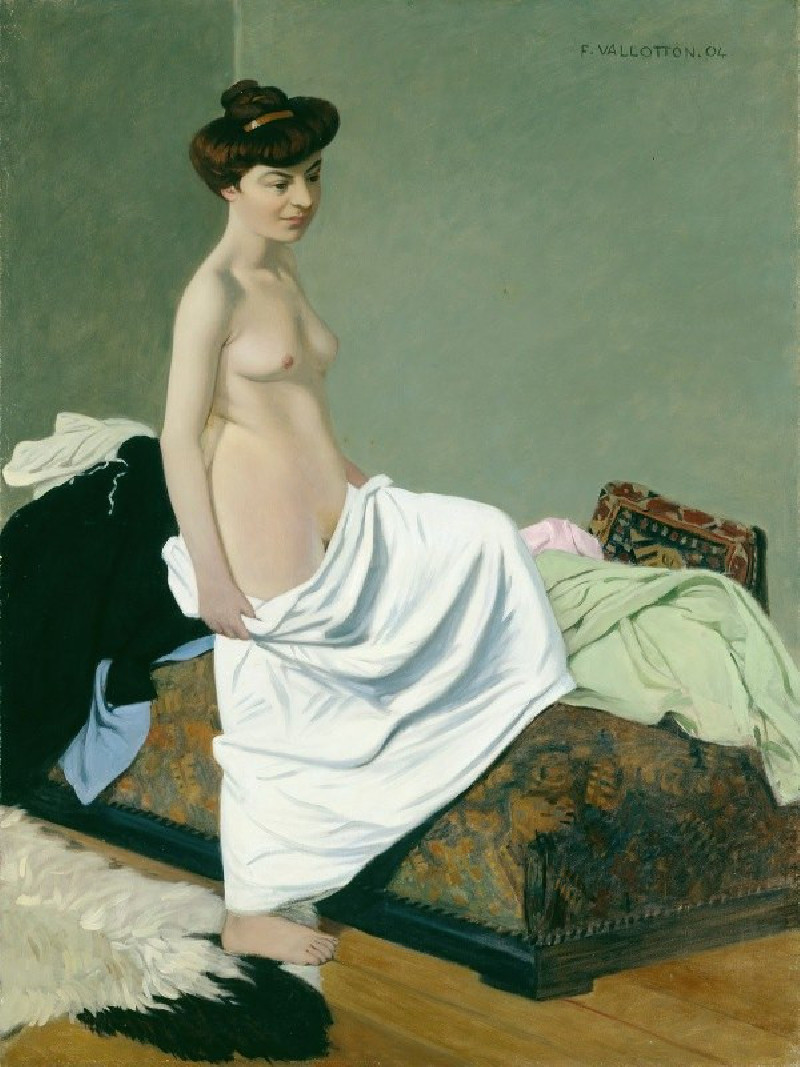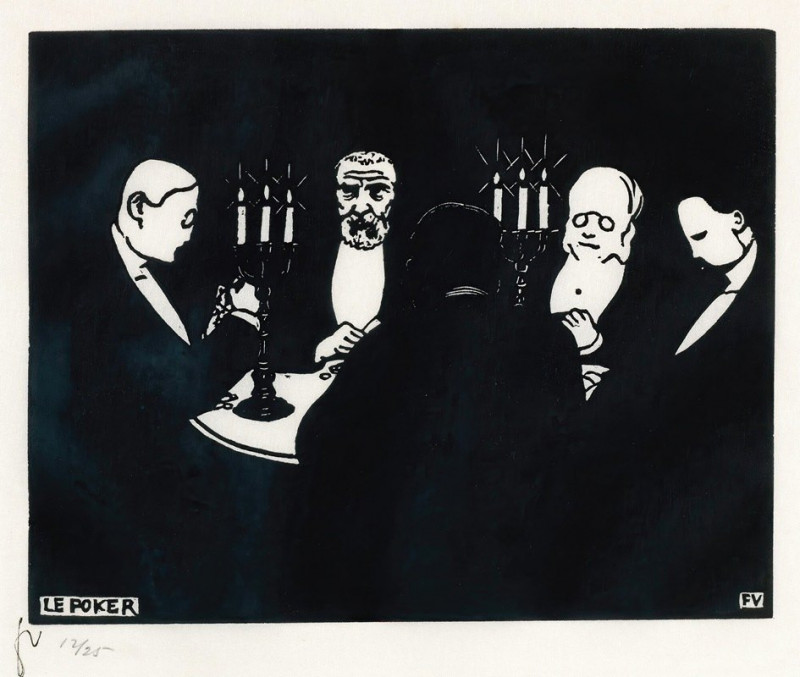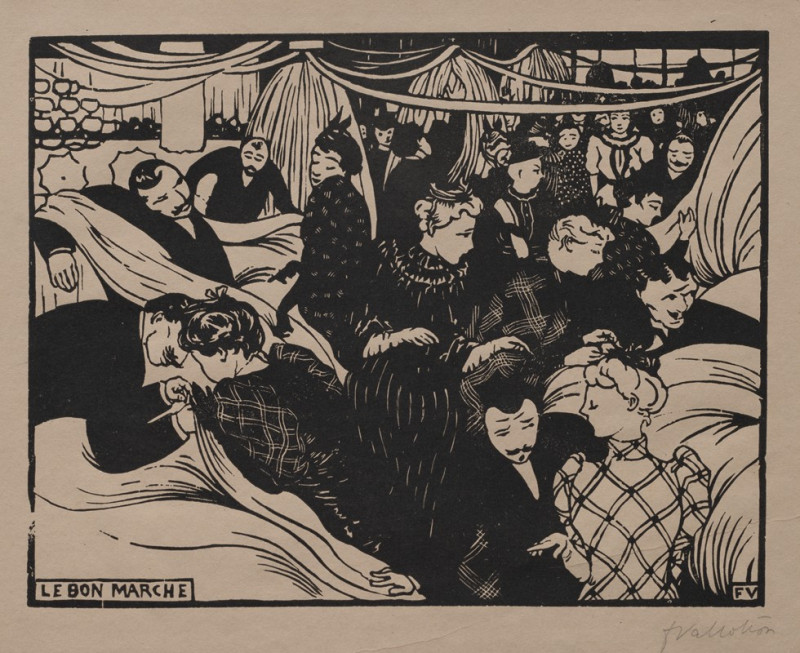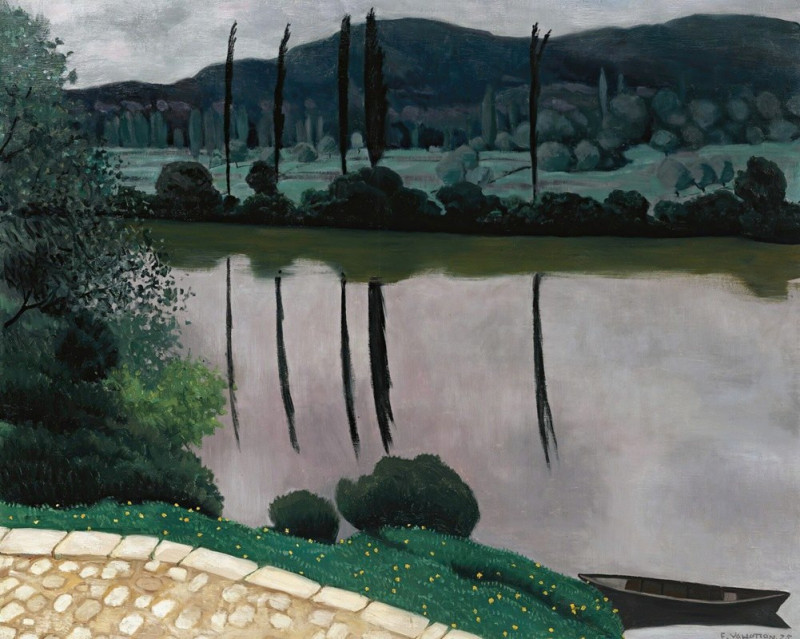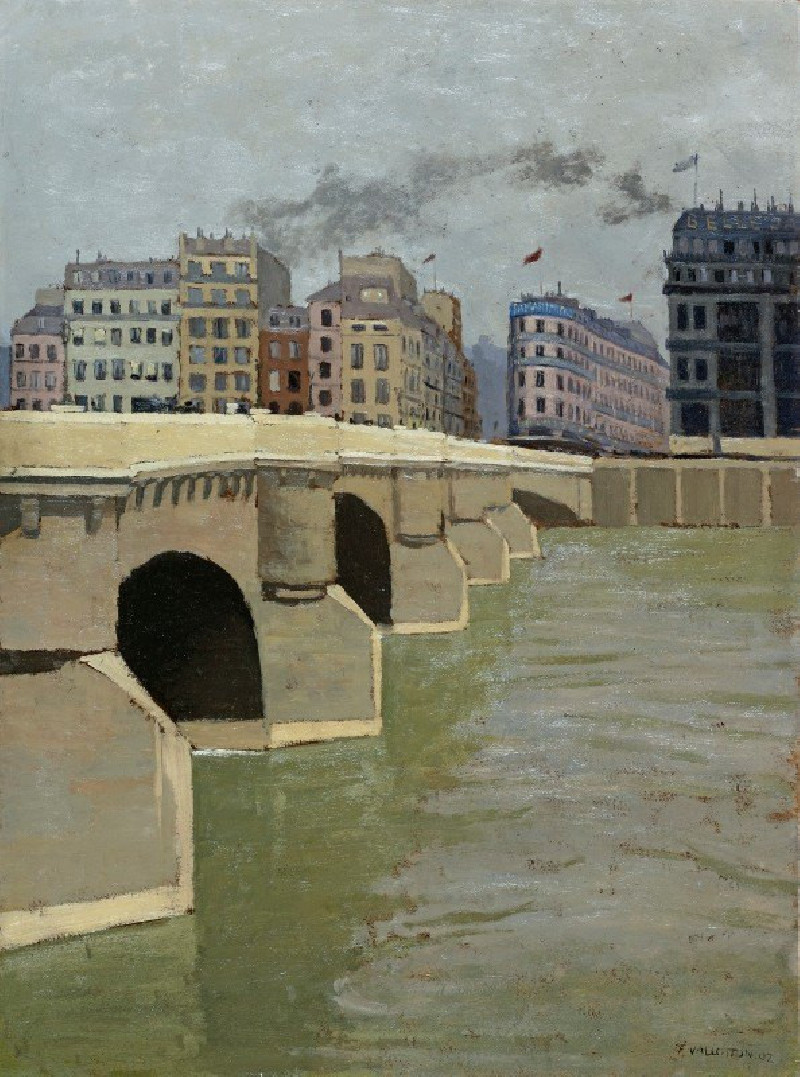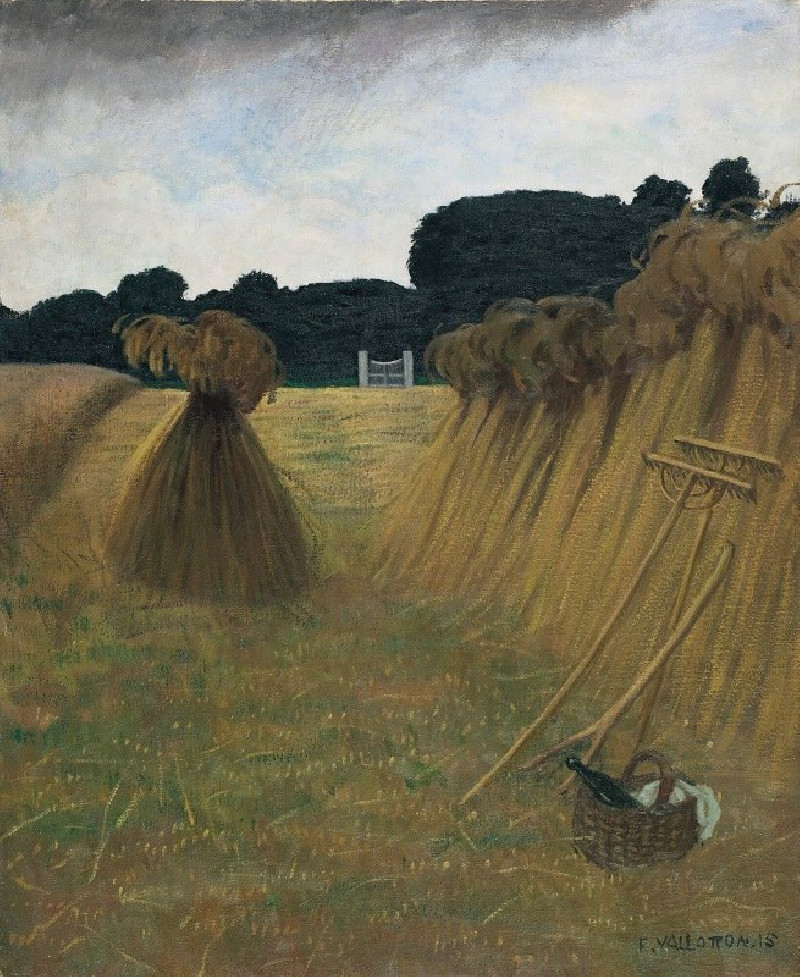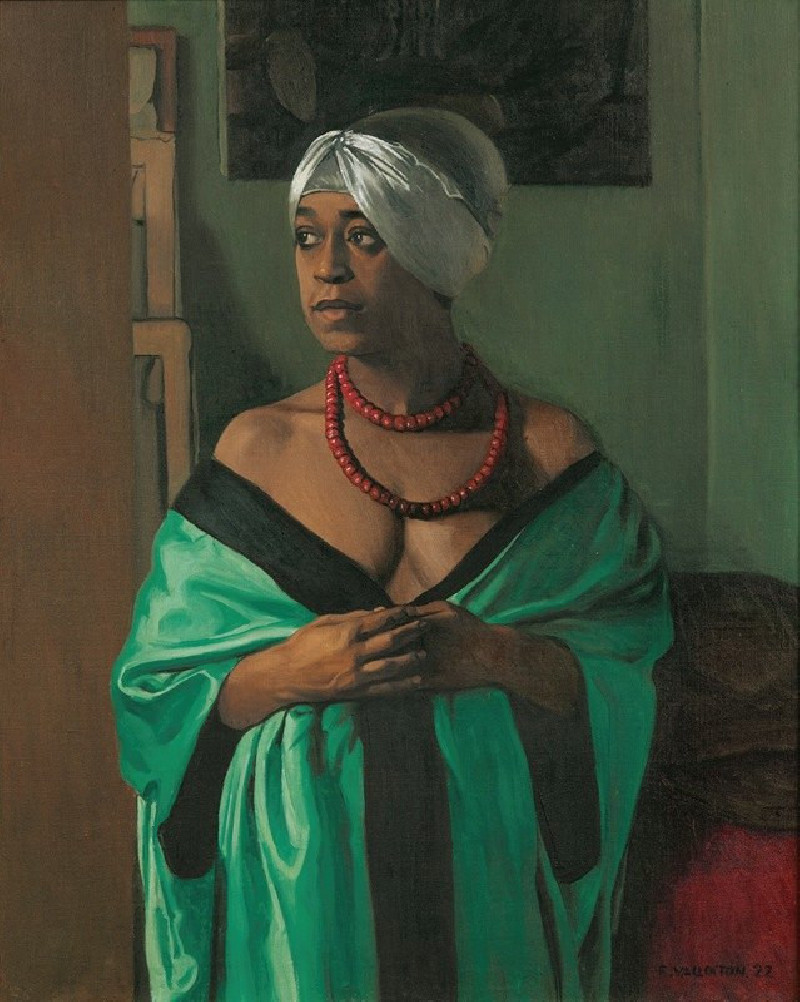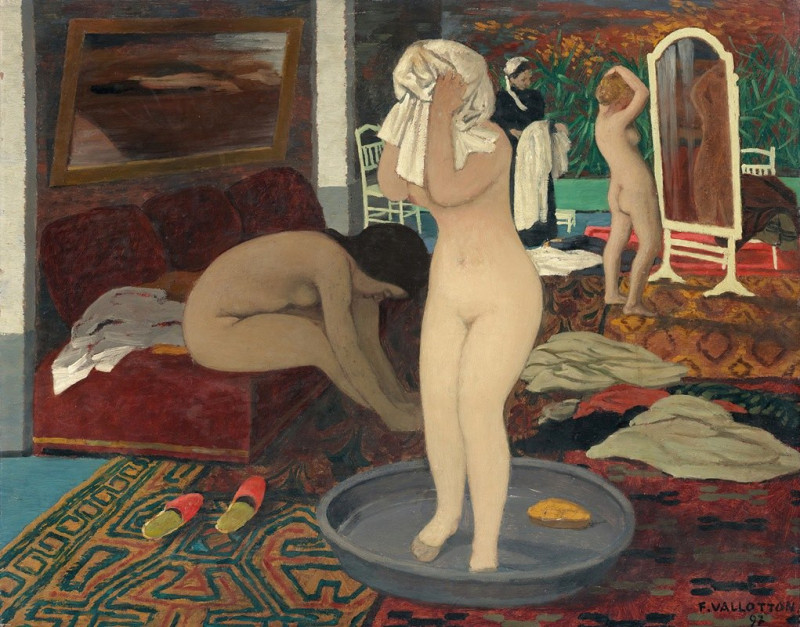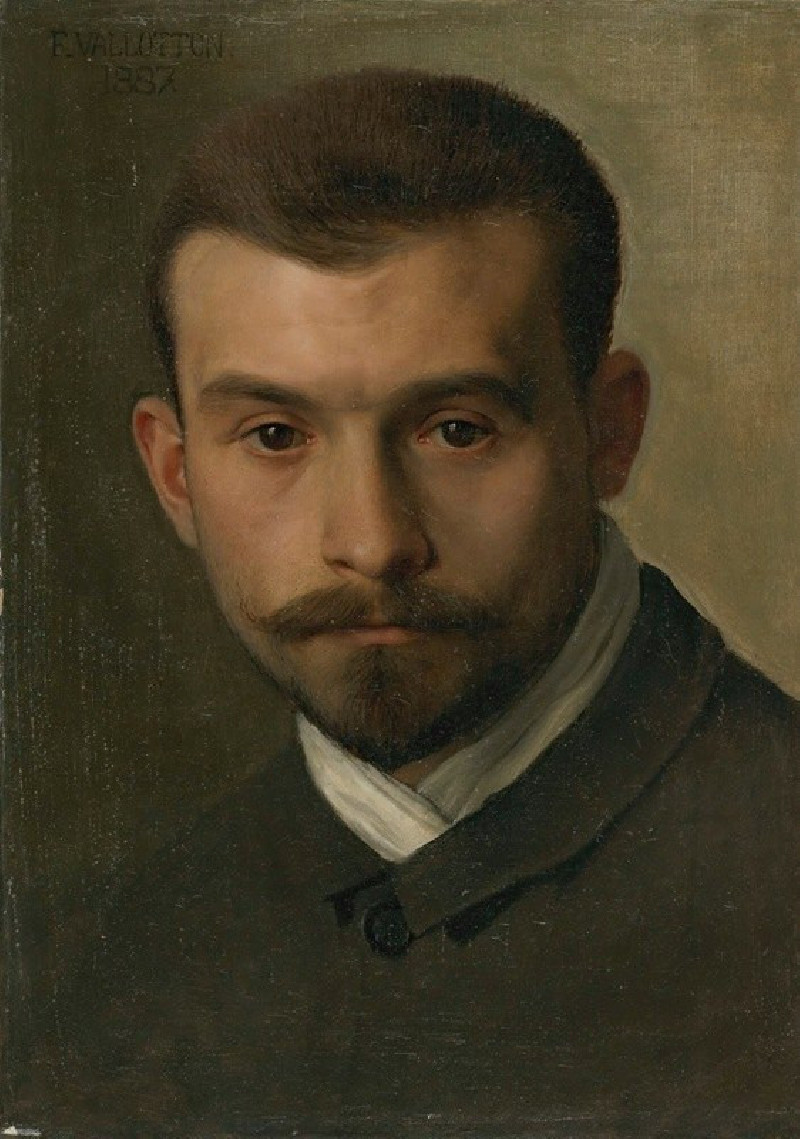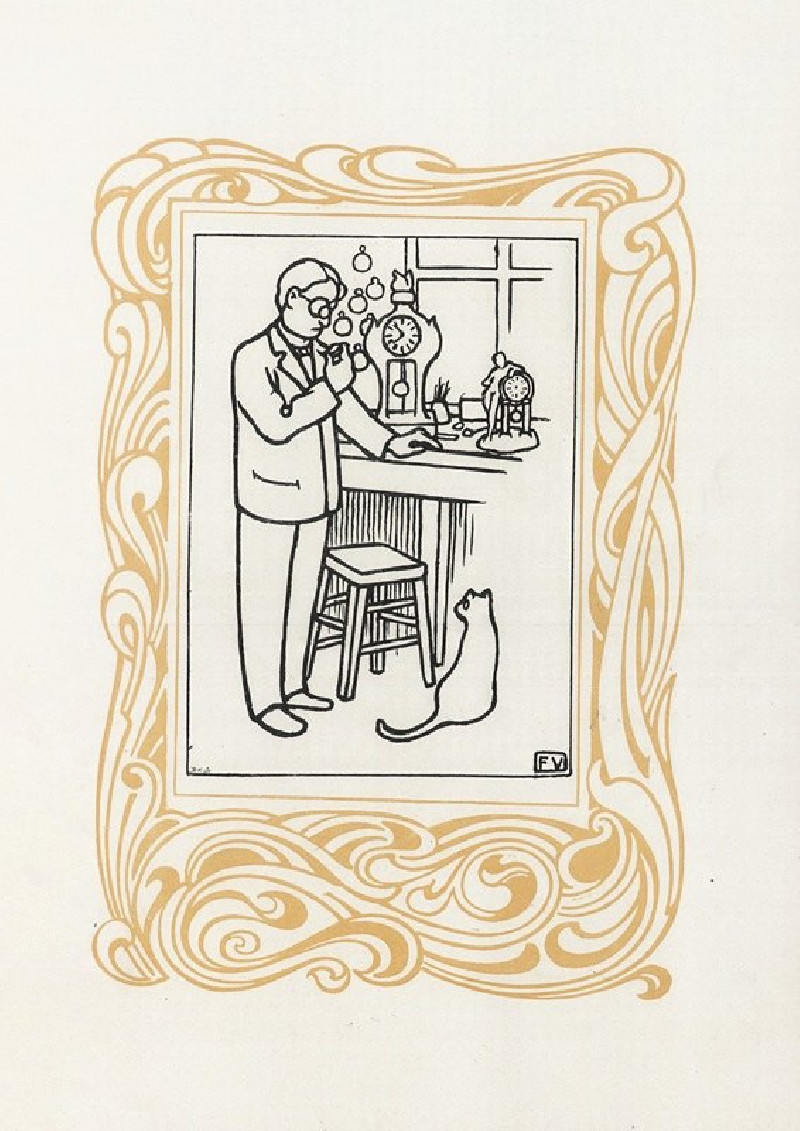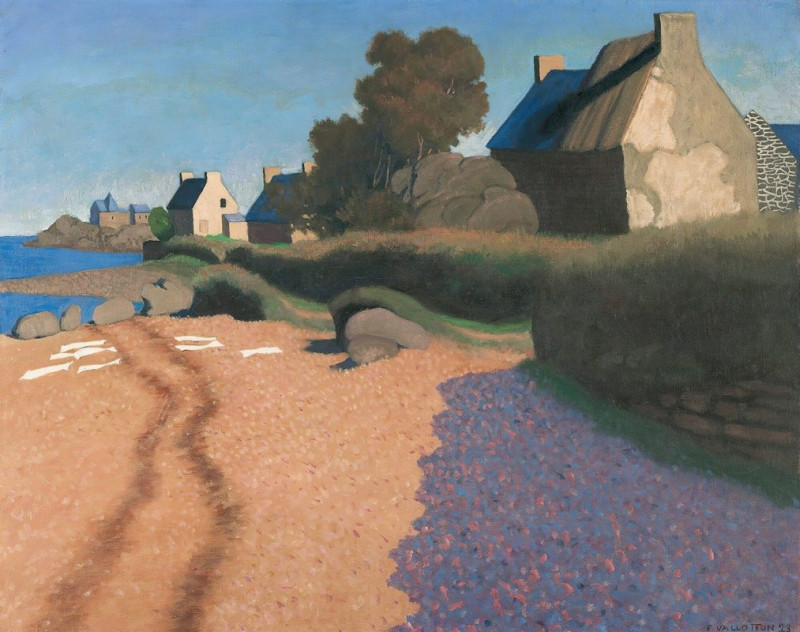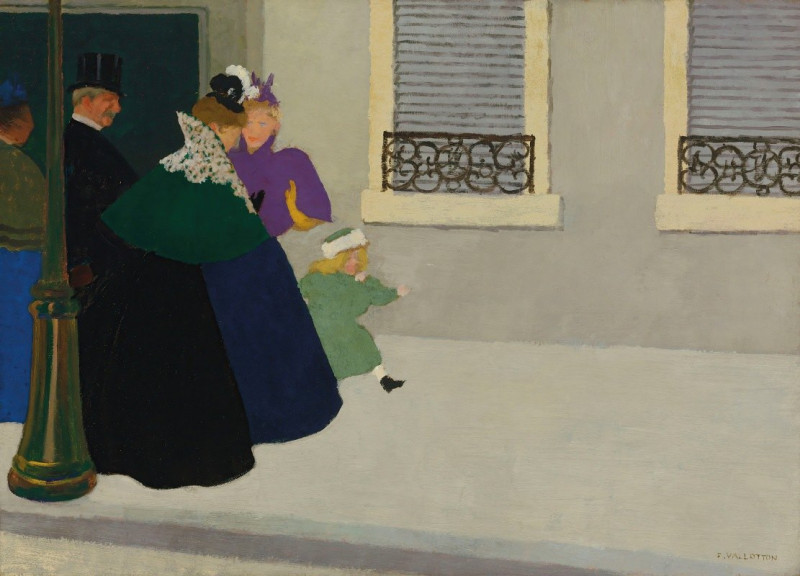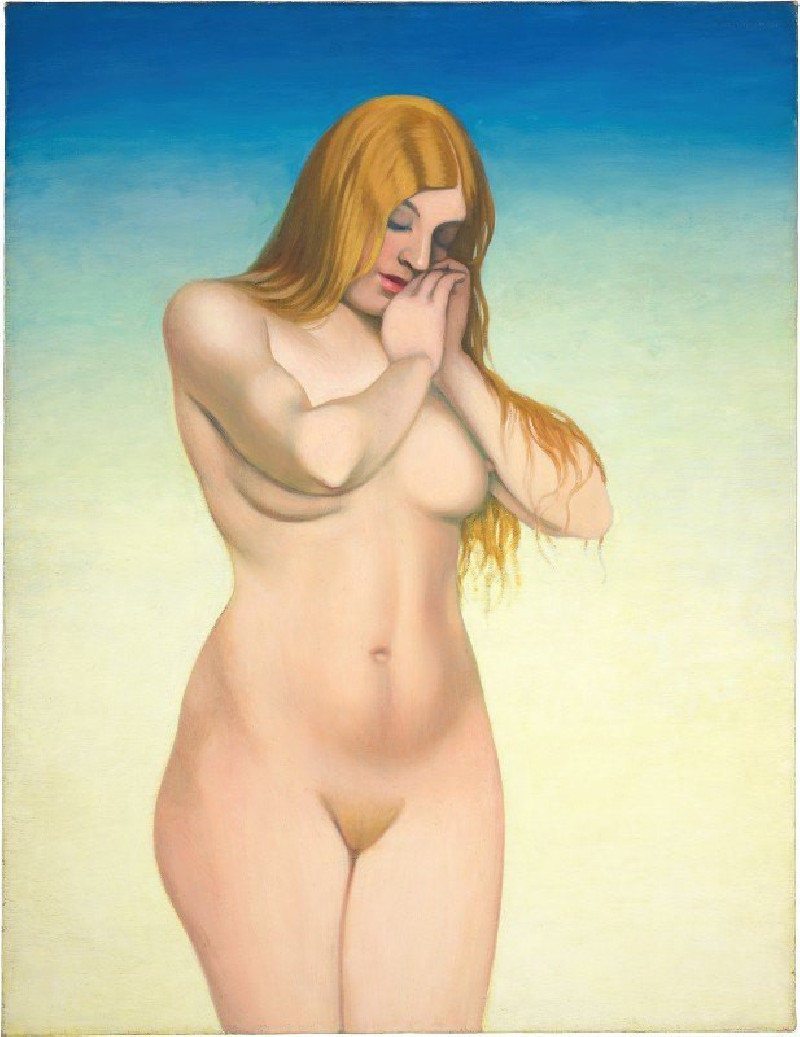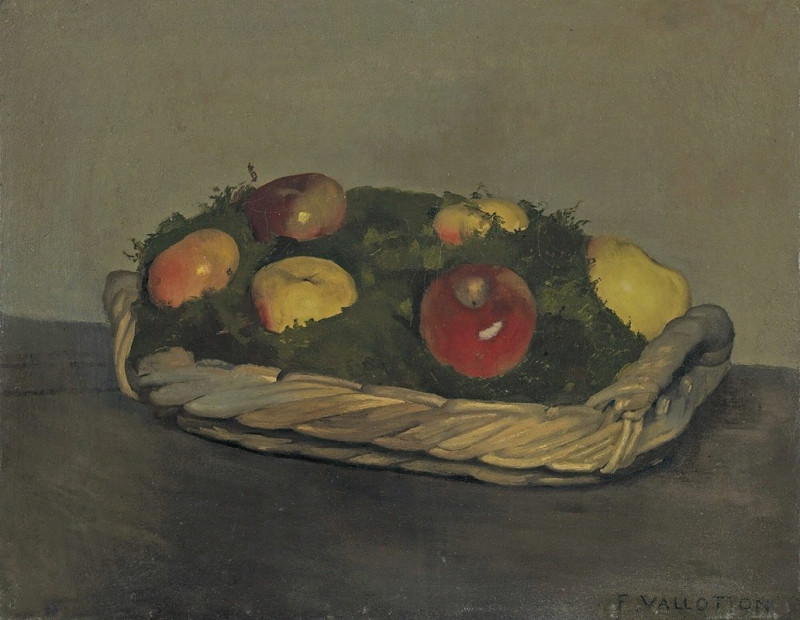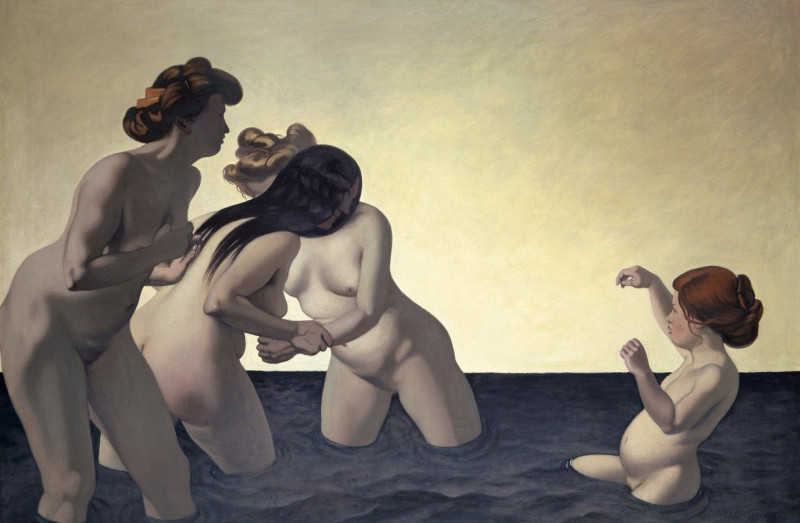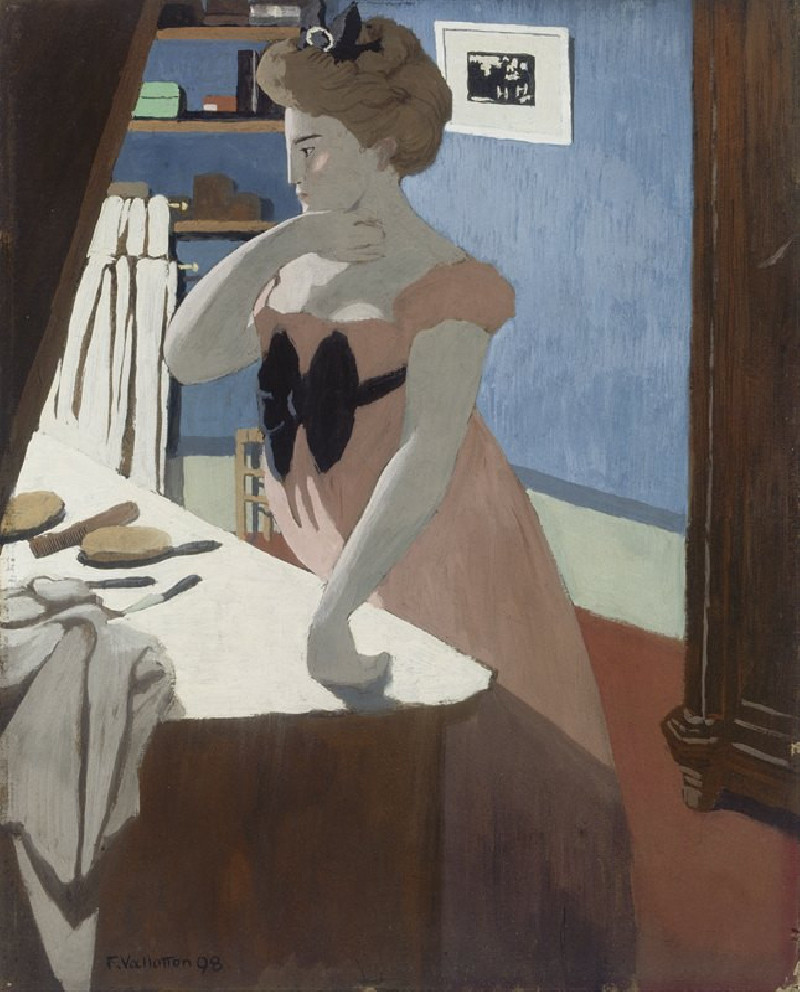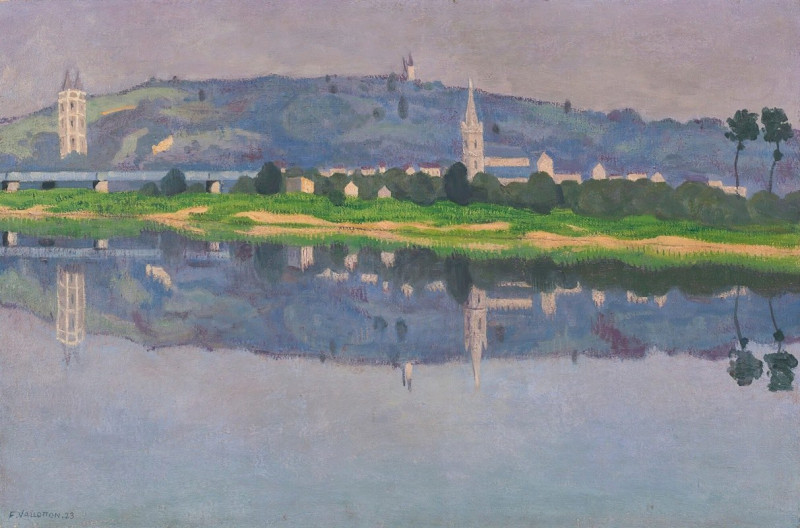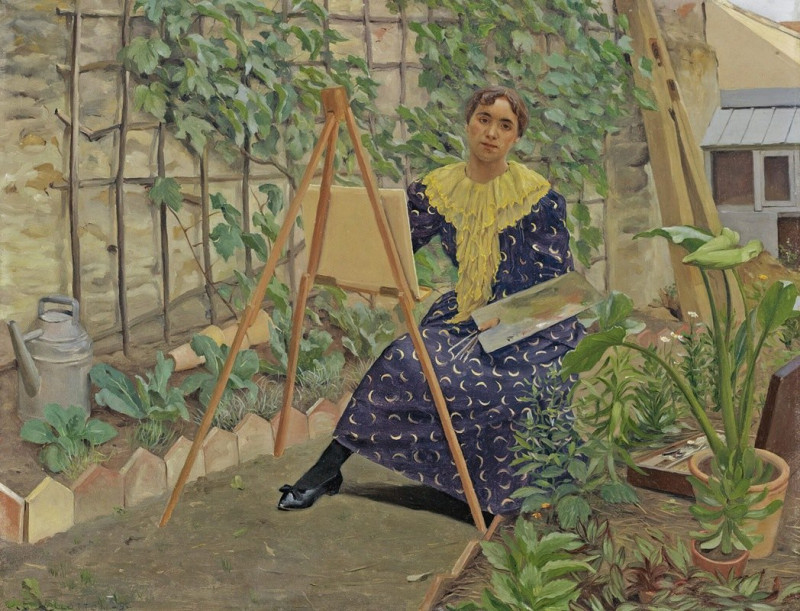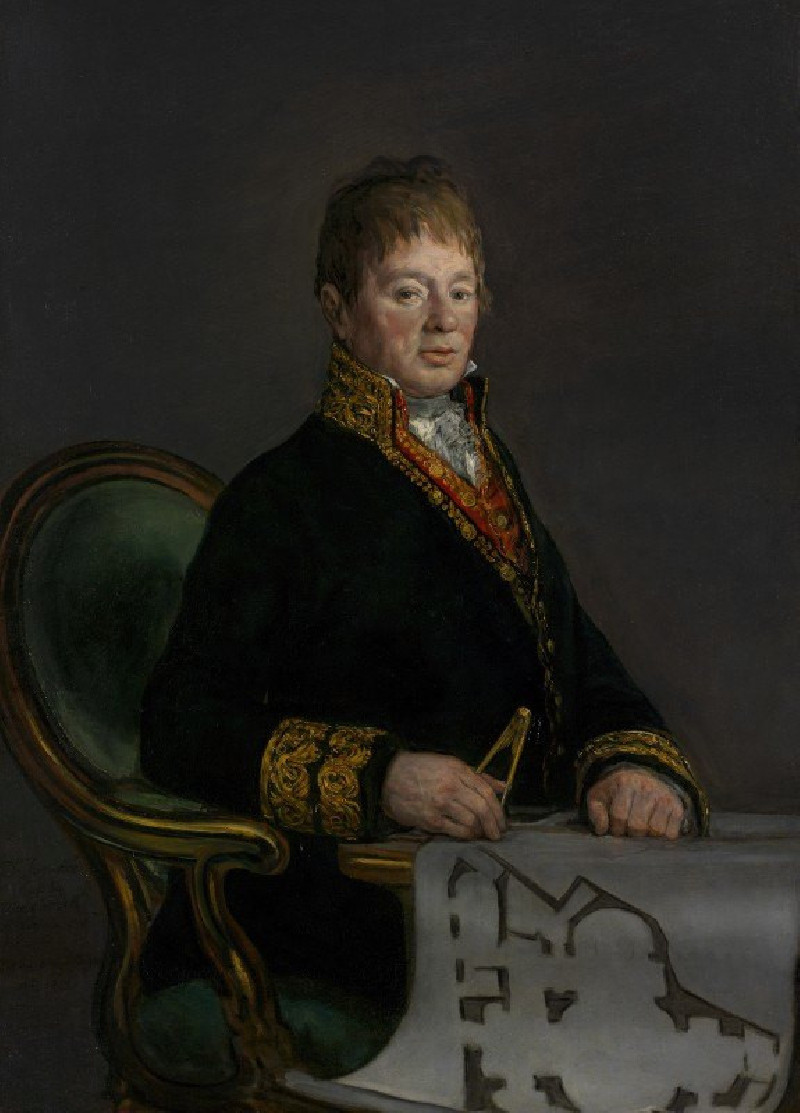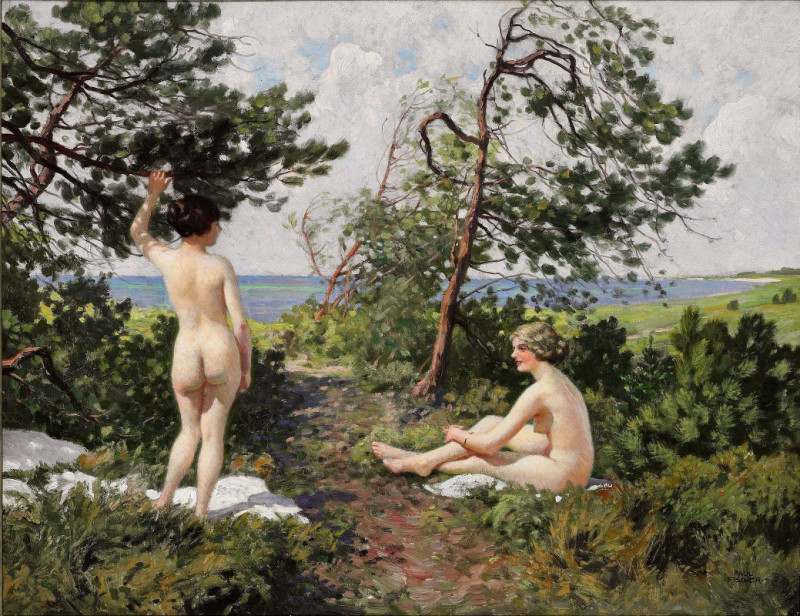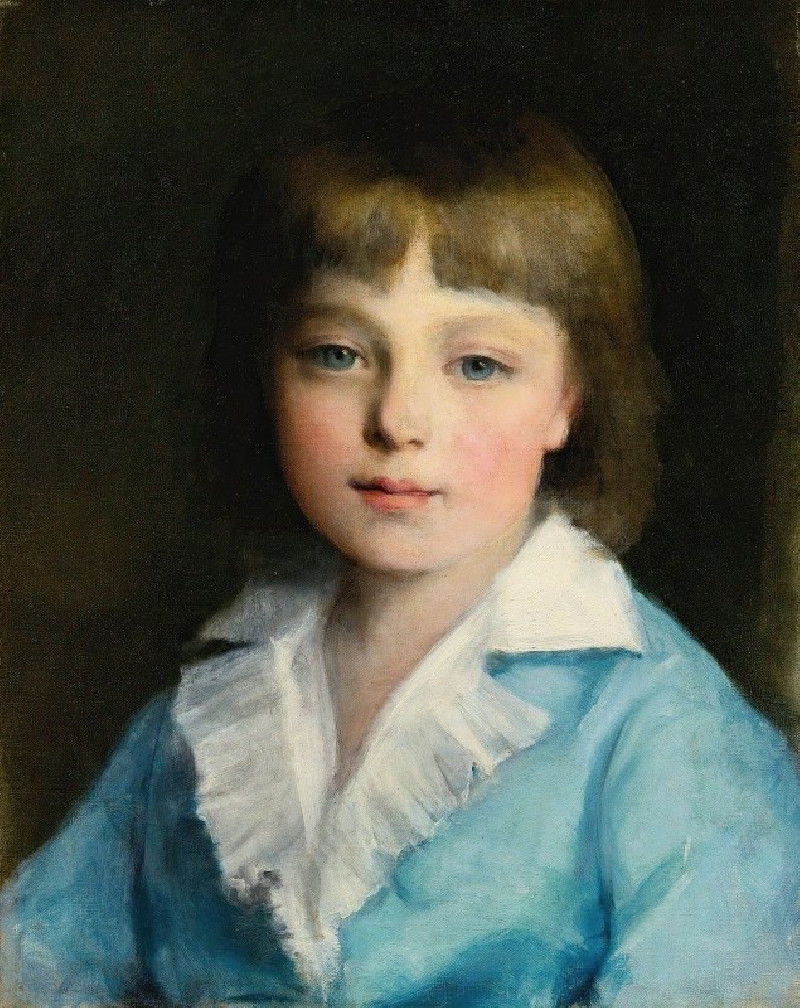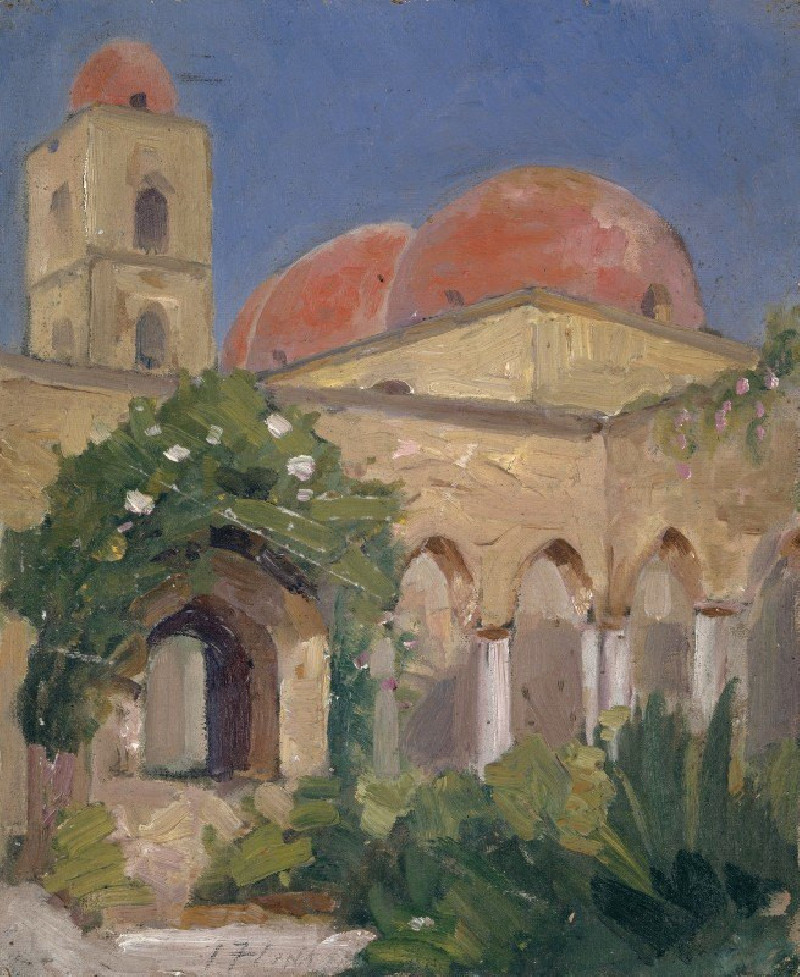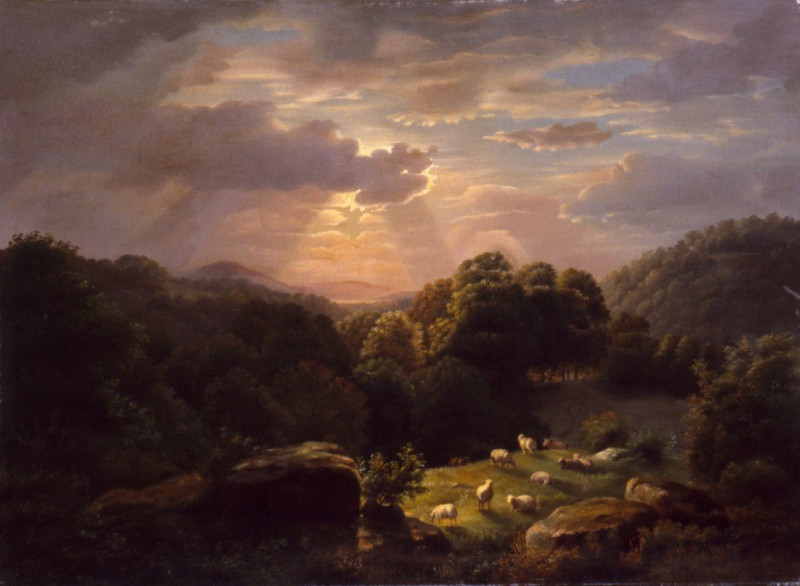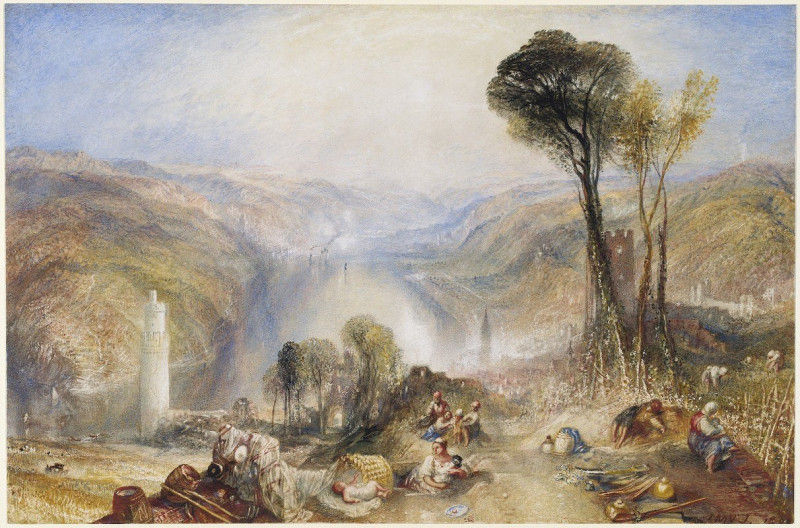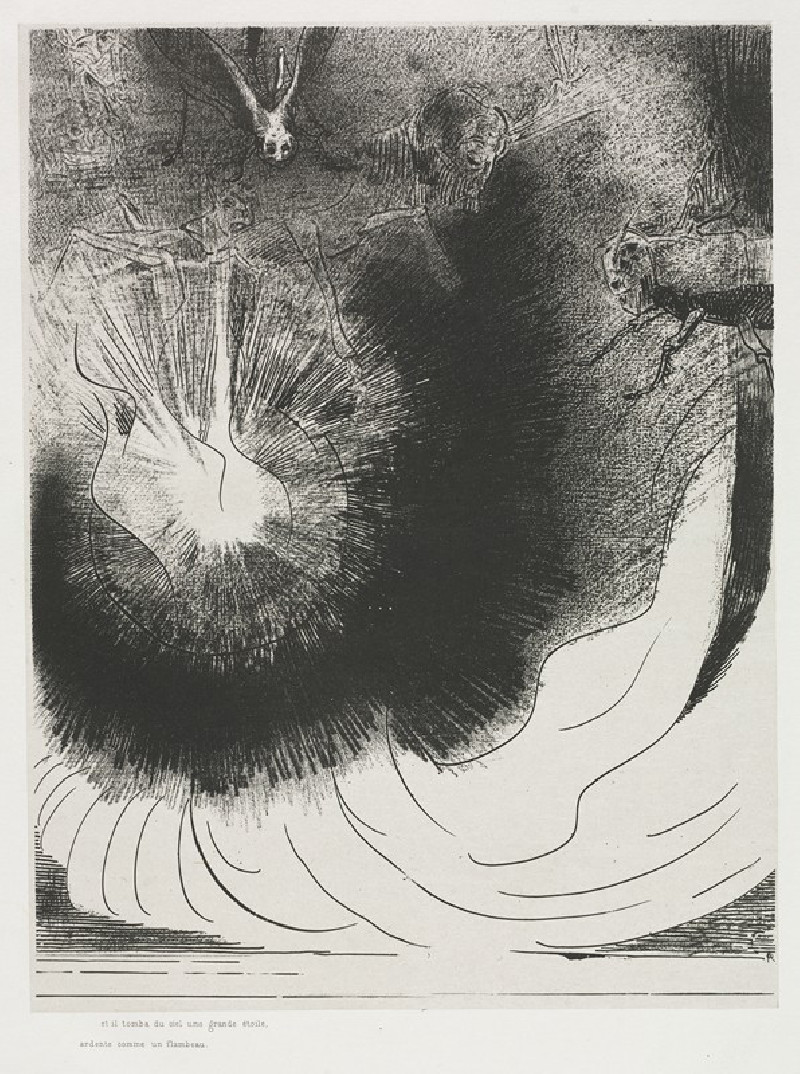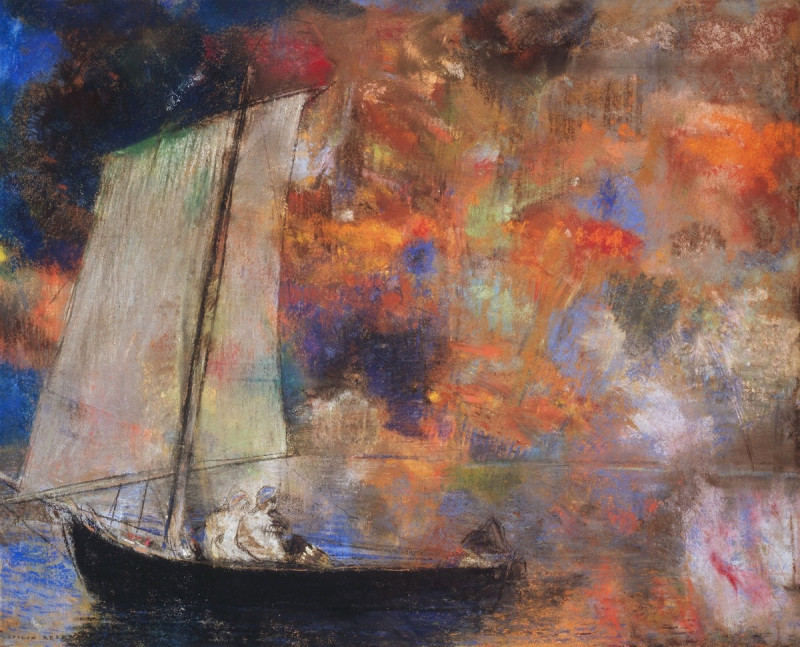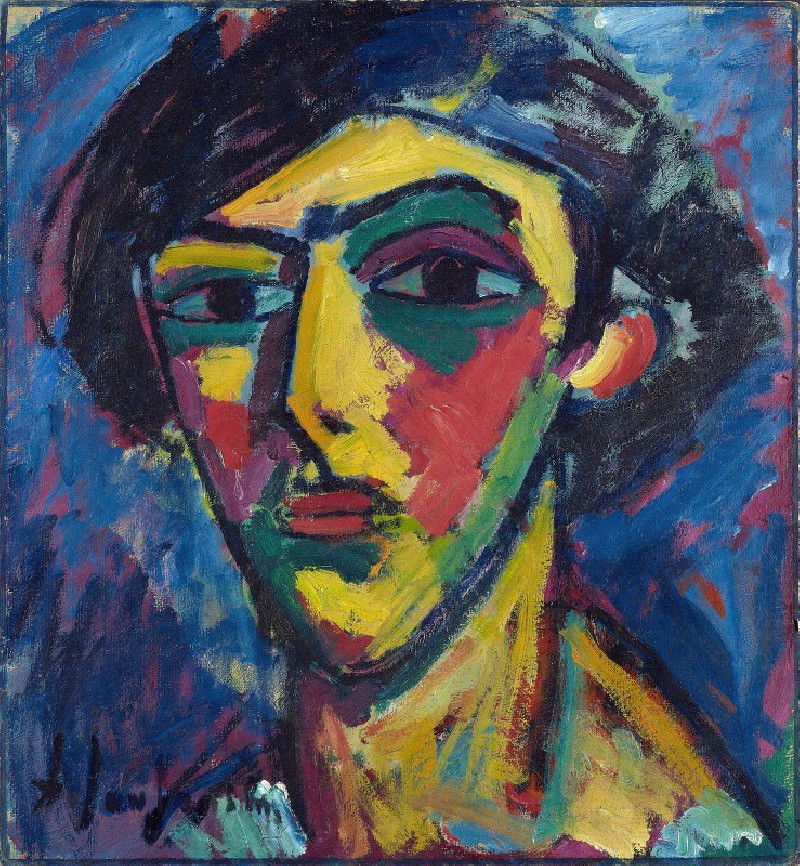Edge Of The Wood (1920)
Technique: Giclée quality print
Recommended by our customers
More about this artwork
The painting "Edge Of The Wood" by Félix Vallotton, created in 1920, effortlessly captures the tranquil yet enigmatic allure of nature's boundary. At first glance, the viewer is greeted with a rich tapestry of lush foliage under the soft fading light of dusk or dawn. The scene is dominated by an intricate interplay of shadows and light, where the darker, dense areas in the background contrast sharply with the vividly lit patches of grass and young trees at the foreground.Vallotton's carefully structured composition directs the viewer's eye across various textures of greenery and the detailed ground, painted in darker tones which suggest the dense underbrush of the woodland floor. Small, young trees in vibrant greens stand out, highlighted by the light that seems to dance through the leaves, giving the painting a dynamic and lively feel. The diverse hues and the deft brushwork create a palpable sense of depth and space, making "Edge Of The Wood" an exquisite study of nature’s silent, serene moments at the day’s beginning or end.
Delivery
Returns
Félix Édouard Vallotton (December 28, 1865 – December 29, 1925) was a Swiss and French painter and printmaker associated with the group of artists known as Les Nabis. He was an important figure in the development of the modern woodcut. He painted portraits, landscapes, nudes, still lifes, and other subjects in an unemotional, realistic style.


